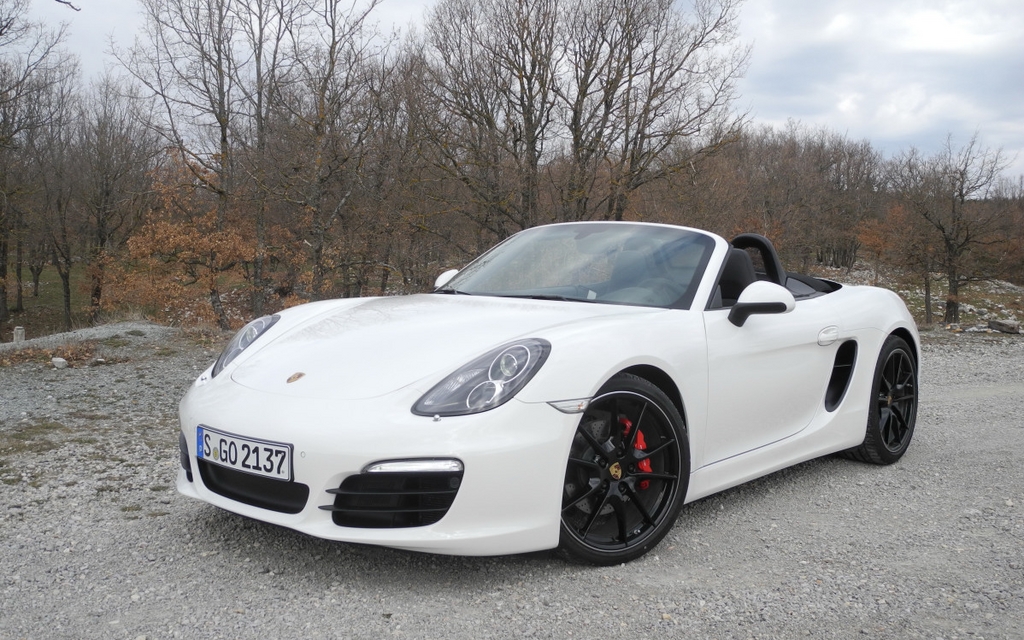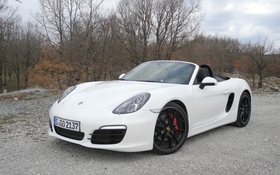2013 Porsche Boxster: Evolved, improved, impressive

| Strong points |
|
|---|---|
| Weak points |
|
In the purest Porsche tradition, the new Boxster is discreet about its upgrades. At first glance, you’d think it had only undergone minor changes, but the fact of the matter is that listing all the touch-ups and modifications would be long indeed. Every element has been revised and modified to improve the vehicle’s balance and performance as much as possible.
Although the vehicle’s shape and mechanical components appear to have only been slightly retouched, a more careful examination reveals that the modifications run a lot deeper than you might think – including a new platform! Naturally, it’s more rigid, but the wheelbase is also 60 mm longer. Overhangs have been reduced, ensuring that the car’s total length remains unchanged.
- Also: 2013 Porsche Boxster: Third Gen Unveiled in Geneva
- Also: 2013 Porsche Boxster and Boxster S: The Picture of Perfection
She’s in great shape
The first generation of the Boxster and the models that followed were inspired by the legendary Porsche 550, whose timeless silhouette remains a classic. This time, they kept the Boxster’s original lines but opted to make a number of touch-ups.
The proportions are the same, but the stylists gave the lateral presentation a little more tone by adding larger wheels – which changes the car’s look completely. Larger air intakes and stacked headlights characterize the front end, which is inspired by the brand’s legendary 1960s race cars. The side air intake has also been augmented. But the most obvious change is the ridges that run over the front and rear fenders for a more distinctive and classic look. The rear spoiler (manual or automatic control, your choice) has been repositioned and the lights have been integrated to emphasize the car’s contemporary look. The passenger compartment has also evolved, most noticeably the air vents that covers the front and upper parts of the dashboard. The interior is original, modern and efficient. Naturally, tradition dictated that the start button remain to the left of the steering wheel.
Engines, always the engines
Like before, this model comes in two versions: Boxster and Boxster S, each with a different drivetrain. The regular version has a 2.7L engine that produces an additional 10 horses compared to the previous version. These 265 horses help propel the car from 0-100 km/hr in 5.5 seconds, which is a little faster than its predecessor. With the improved performance and extra power, you may be surprised to learn that fuel consumption is actually 15% lower – but that’s thanks mainly to its aluminum body and the 35 kg that it has shed overall. Both models are also equipped the Stop-Start device that cuts the engine when stopped and starts again when you accelerate.
The most high-performance (and most expensive) version is the Boxster S. It’s equipped with a flat-six naturally, but now it has a 3.4L capacity. This motor generates 315 horses, five more than the old version. Here too, performances are slightly improved, with the manufacturer posting a 4.8-second time for the 0-100 km/hr sprint. Average fuel consumption has been reduced by 1.4 litres per 100 km (15% in savings). Regardless of the engine you choose, the six-speed manual gearbox comes factory standard. For those who want it, the efficient seven-speed twin-clutch automatic PDK gearbox can be ordered on option. It will help enhance the car’s performance. But don’t overlook the manual gearbox – with its gear ratio, precision of its shifter and the clutch progression, it’s practically in a class by itself.
It owns the road
At the Boxster’s launch on the French Riviera, I was given the opportunity to drive both versions. The S is definitely the fastest thanks to its engine power. But both continue to offer the same agility and driveability that this vehicle has always been known for. I wasn’t particularly fond of the mountainous, winding road we were on, but it was an exceptional setting for learning about the Porsche’s qualities, including accelerations, braking and handling in turns. If you’re worried about the electrical power steering, fear not: it’s among the best out there in terms of assistance and precision. Substantial progress has been made in this area.
There’s no need to go into great detail. Instead, rest assured that this vehicle guarantees you a unique experience in every possible way. The pick-up is responsive, making passing safer. Have you accelerated too quickly? Is there a turn coming up fast? The brakes will take care of everything. To be perfectly honest, you can’t truly test the limits of a car like this on a public road. For that, you need to head to a race track. Plus, I’m convinced that we’d hit my limit before even coming close to the car’s limits. During this test drive, we followed one of the most difficult Monte Carlo Rally routes, and the Boxster was up to the task.
In sum, the 2013 Boxster has kept its classic shape, but various improvements have made it better than ever. It’s more fuel efficient, lighter and a lot of fun to drive. Plus, the canvas top deploys even more quickly than before, while the front and rear baggage holds add to this car’s practical qualities.
Finally, note that this new generation of the Boxster managed to complete the legendary Nürburgring course in less than eight minutes – fully 12 seconds less than the previous version. That says it all!











